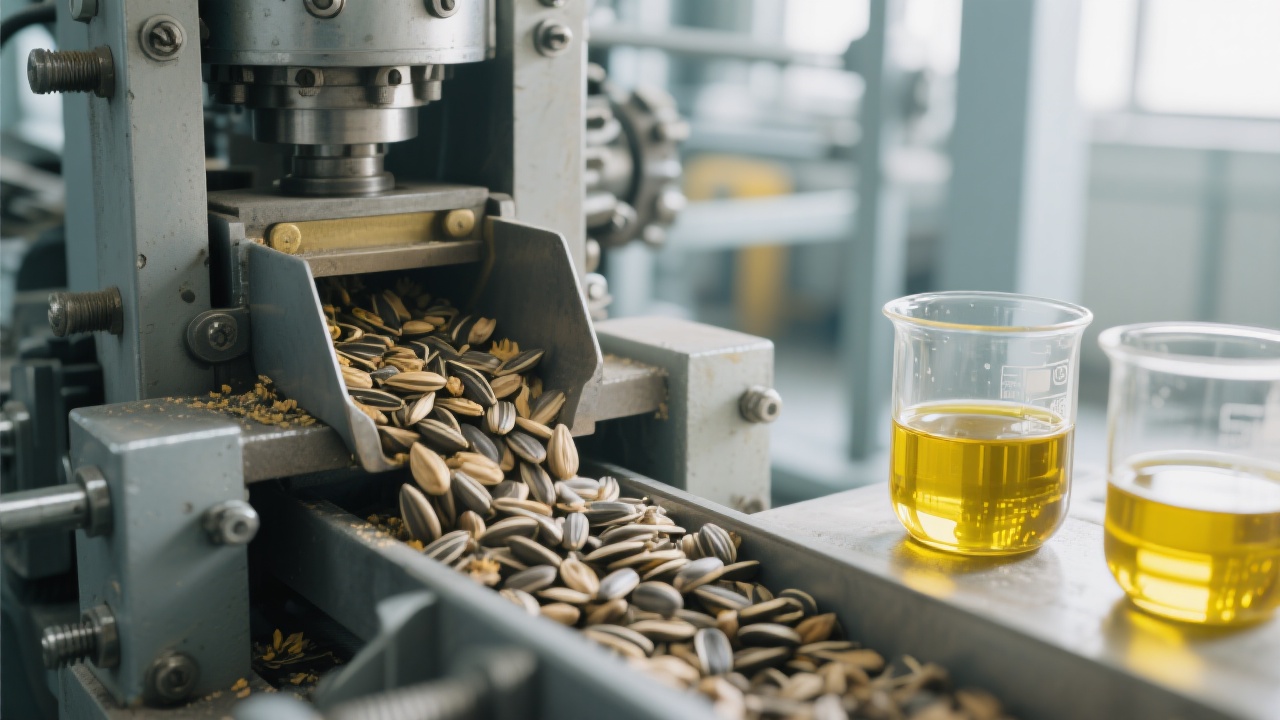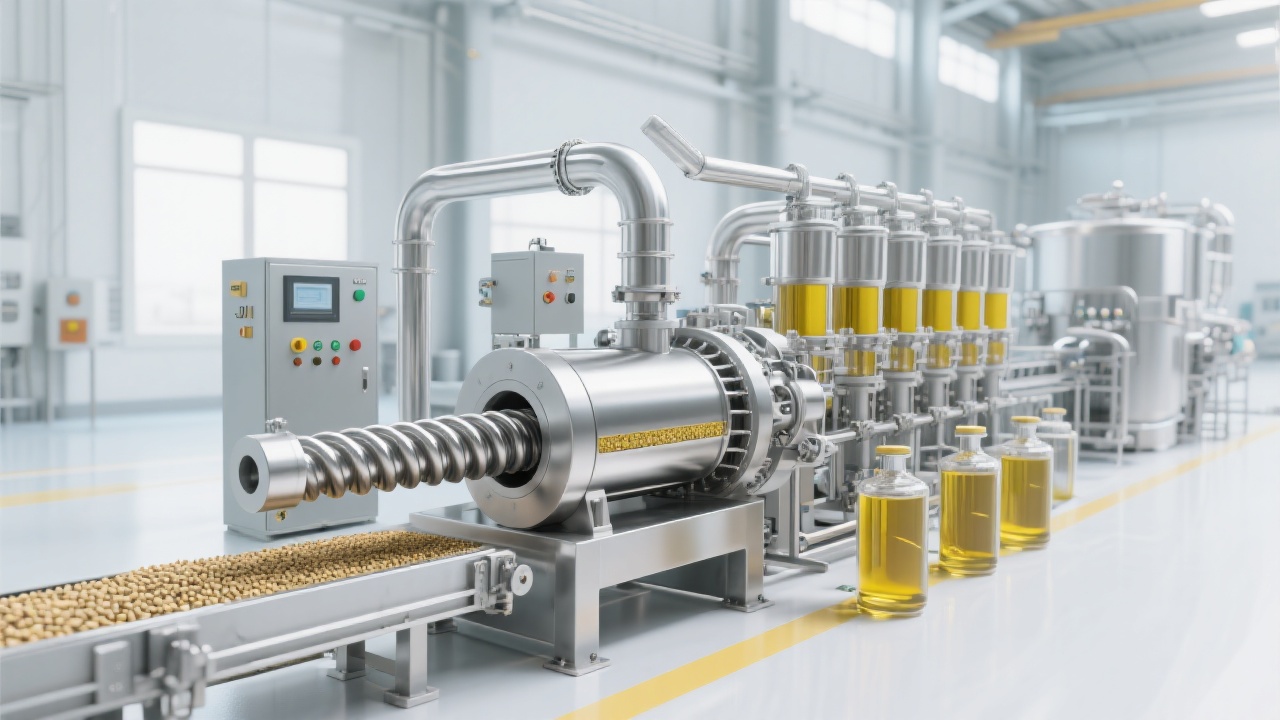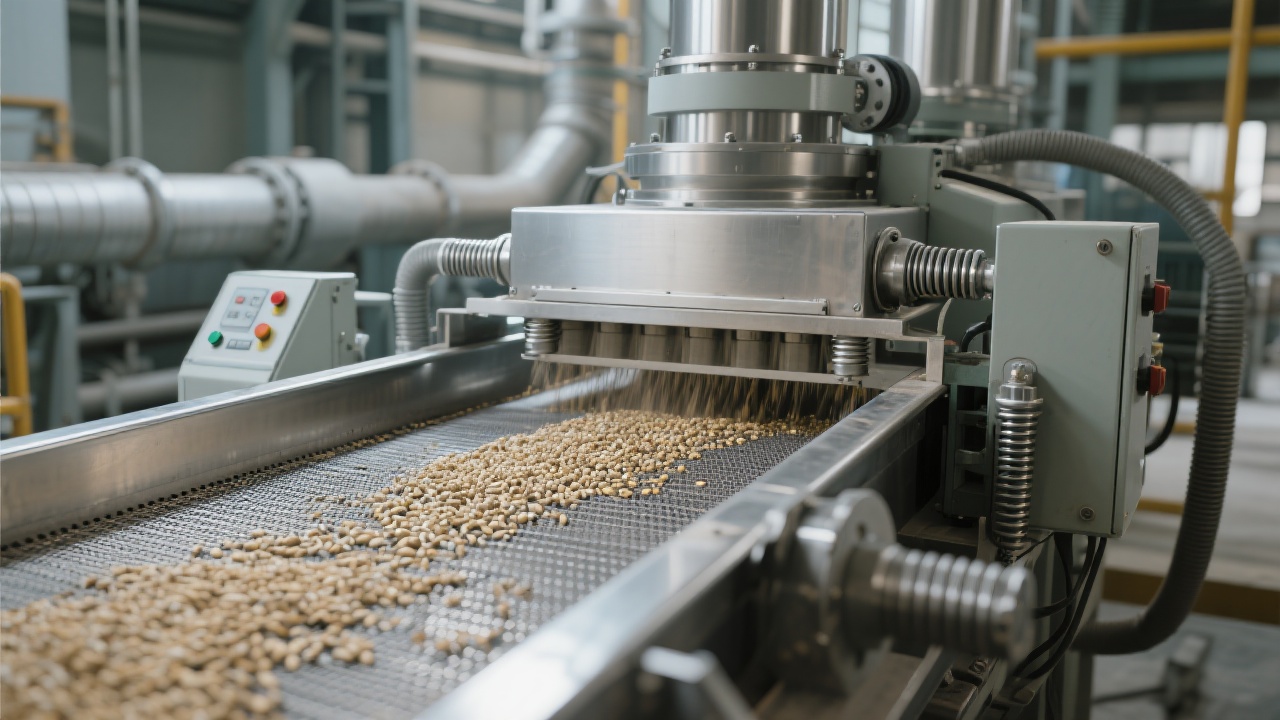
In the sunflower oil production industry, commercial enterprises are constantly seeking ways to increase production efficiency and reduce costs. Hot-press sunflower oil presses have emerged as a powerful solution for large-scale production. Compared with cold-press sunflower oil presses, hot-press presses offer significant advantages in terms of oil yield and cost-effectiveness.
According to industry data, hot-press sunflower oil presses can generally achieve an oil extraction rate of 40% - 45%, while cold-press presses typically have an oil extraction rate of 30% - 35%. This means that for every ton of sunflower seeds, a hot-press press can produce 100 - 150 more kilograms of oil, which directly translates into higher revenue for commercial producers. In addition, the hot-press process can reduce the residual oil content in the meal, making it more suitable for subsequent processing or as animal feed, further improving the overall economic benefits of the production process.

The working principle of hot-press technology is based on the fact that heating sunflower seeds can change the physical and chemical properties of the oil cells, making it easier to extract the oil. When the sunflower seeds are heated, the protein in the seeds denatures, and the oil cells rupture, releasing the oil more easily. This process can be understood by analogy with squeezing a wet sponge. When the sponge is heated, the water inside becomes more fluid and can be squeezed out more easily.
Specifically, the hot-press process typically involves pre - heating the sunflower seeds to a certain temperature (usually between 80°C - 120°C) and then pressing them. The heat energy breaks the cell walls of the sunflower seeds, allowing the oil to flow out more freely. This significantly increases the oil extraction rate compared to cold-press methods, where the seeds are pressed at room temperature without heating.
In commercial sunflower oil production, achieving a balance between oil yield and quality is crucial. While hot-press technology can increase the oil yield, improper heating can also have a negative impact on the quality of the oil, such as causing the oil to have a darker color, a stronger odor, and a reduced nutritional value.
To address this issue, producers need to carefully control the temperature and heating time. For example, if the heating temperature is too high or the heating time is too long, the oil may be over - heated, resulting in the formation of harmful substances and a decrease in quality. On the other hand, if the temperature is too low or the heating time is too short, the oil extraction rate will not be maximized.
Based on years of industry experience, a recommended temperature range for hot - pressing sunflower seeds is 90°C - 110°C, and the heating time should be controlled within 20 - 30 minutes. By precisely controlling these parameters, producers can achieve a good balance between high oil yield and high - quality oil production.

A sunflower oil production company in Ukraine was facing challenges in meeting the increasing market demand due to low production efficiency. After switching to a hot-press sunflower oil press, the company saw a remarkable improvement in its production. The oil extraction rate increased from 32% to 42%, and the production cost per liter of oil decreased by 15%. In just one year, the company's revenue increased by 25% due to the higher oil yield and lower costs.
Another customer in Argentina, a medium - sized sunflower oil producer, was concerned about the quality of the oil while aiming to increase production. By carefully controlling the hot - press parameters, they were able to produce high - quality oil with a high yield. The company reported that the improved oil quality helped them gain a larger market share and increase their profit margins.
| Features | Hot - Press Sunflower Oil Presses | Cold - Press Sunflower Oil Presses |
|---|---|---|
| Oil Extraction Rate | 40% - 45% | 30% - 35% |
| Production Cost | Lower due to higher yield | Higher due to lower yield |
| Oil Quality | Can be adjusted by controlling parameters | Generally has a lighter color and more natural flavor |
| Suitability for Large - Scale Production | Highly suitable | Less suitable |
While cold - press sunflower oil presses are often preferred for their ability to produce oil with a more natural flavor and higher nutritional value in some niche markets, hot - press presses are the clear choice for commercial large - scale production due to their high yield and cost - effectiveness.

Hot - press sunflower oil presses offer a powerful solution for commercial sunflower oil production enterprises. With their high oil yield, cost - effectiveness, and the ability to balance yield and quality, they can significantly improve the production efficiency and market competitiveness of commercial producers. By choosing the right equipment based on their specific needs, enterprises can achieve greater success in the sunflower oil market.
We invite you to share your experiences with sunflower oil presses or ask any questions you may have. Whether you are currently using a hot - press or cold - press press, or are still in the process of choosing the right equipment, we would love to hear from you. Click here to learn more about our hot - press sunflower oil presses and how they can benefit your business. Don't miss this opportunity to enhance your production efficiency and economic benefits!

